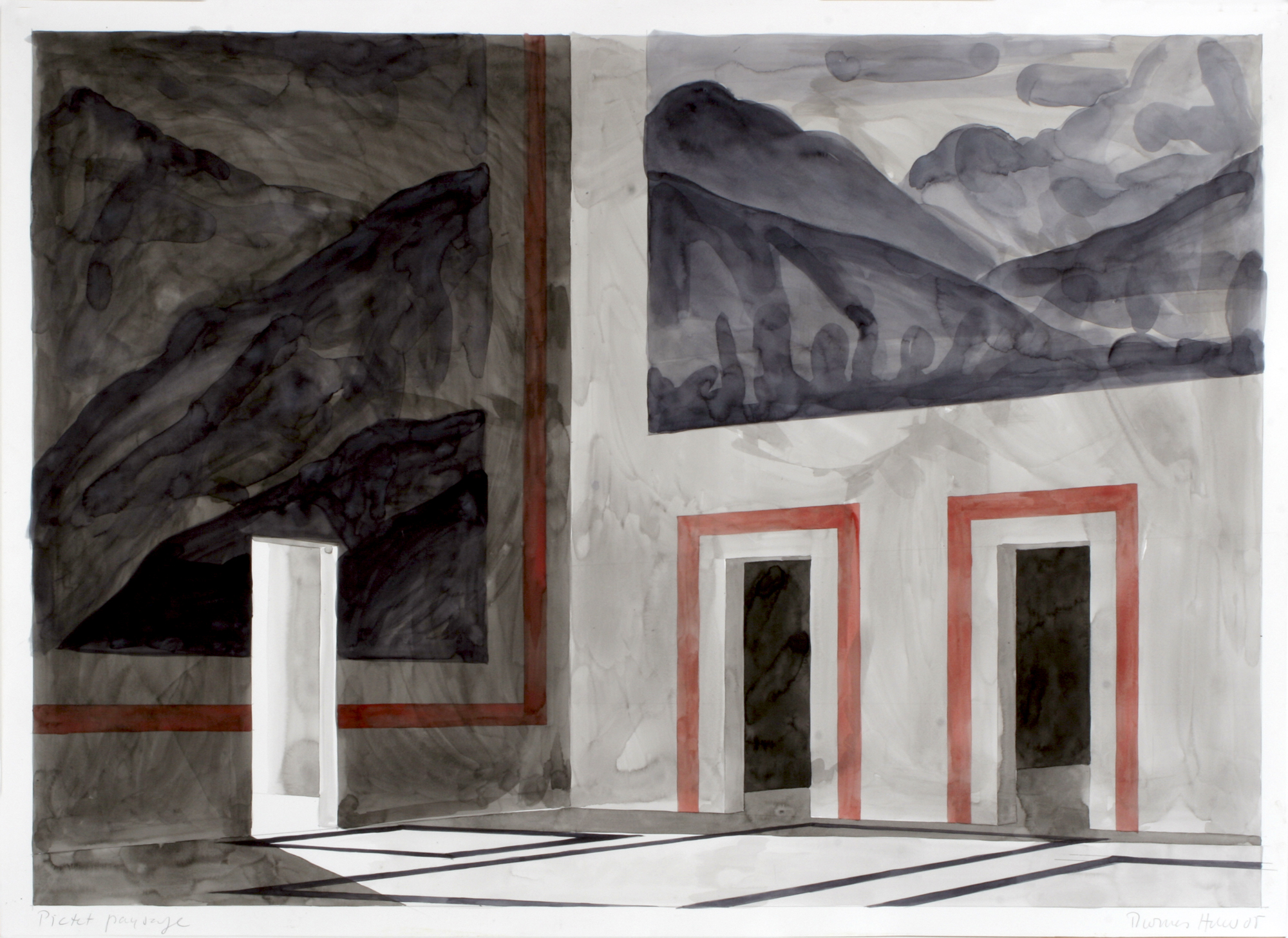Born in 1955 in Zurich, Thomas Huber now lives and works in Berlin after spending many years in Düsseldorf. He begins training at the Kunstgewerbeschule Basel, then enters the Royal College of Art in London, where he studies under David Hockney notably. He goes on to study at Düsseldorf’s Staatliche Kunstakademie between 1980 and 1983.
By opting for a figurative approach and choosing to apply his paint smoothly, the very opposite of the neo-expressionism of the 1980s, Huber goes against the grain. He favours a painting that is intelligent, metaphysical, laden with symbols. His imaginary universe draws on art historical sources – from Byzantine art to Pieter Saenredam to modern architecture – and his canvases are like so many open doors that lead to mental and contemplative spaces, referring viewers back to their own perception and using recurrent self-referential effects.
Like René Magritte’s celebrated painting The Treachery of Images, Huber plays with the depiction of appearances and substitutes for that painting’s famous pipe a “ready-to-inhabit utopia”. His work wholly constitutes a reflection on painting. That is, the artist is constantly questioning its legitimacy, supports, identity, limits, display and relationship to the viewer. He expresses this close connection between thought and the visible in an important body of texts and lectures that often accompany his paintings and installations. Indeed, writing and image complement and fuel each other.
His work attracted attention during the important 1984 show Von hier aus in Düsseldorf. In 1988 the Georges-Pompidou Centre devoted a solo show to him and between 2004 and 2005, a grand travelling retrospective visited Europe.
By opting for a figurative approach and choosing to apply his paint smoothly, the very opposite of the neo-expressionism of the 1980s, Huber goes against the grain. He favours a painting that is intelligent, metaphysical, laden with symbols. His imaginary universe draws on art historical sources – from Byzantine art to Pieter Saenredam to modern architecture – and his canvases are like so many open doors that lead to mental and contemplative spaces, referring viewers back to their own perception and using recurrent self-referential effects.
Like René Magritte’s celebrated painting The Treachery of Images, Huber plays with the depiction of appearances and substitutes for that painting’s famous pipe a “ready-to-inhabit utopia”. His work wholly constitutes a reflection on painting. That is, the artist is constantly questioning its legitimacy, supports, identity, limits, display and relationship to the viewer. He expresses this close connection between thought and the visible in an important body of texts and lectures that often accompany his paintings and installations. Indeed, writing and image complement and fuel each other.
His work attracted attention during the important 1984 show Von hier aus in Düsseldorf. In 1988 the Georges-Pompidou Centre devoted a solo show to him and between 2004 and 2005, a grand travelling retrospective visited Europe.



























